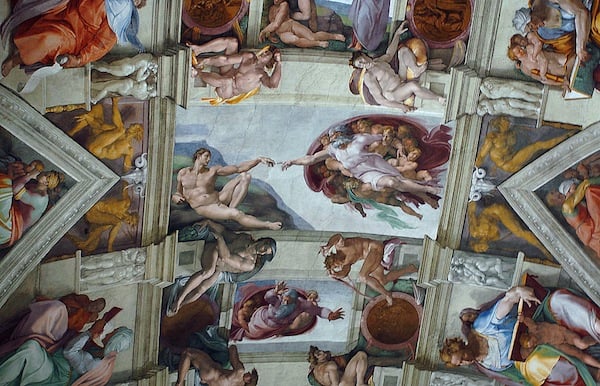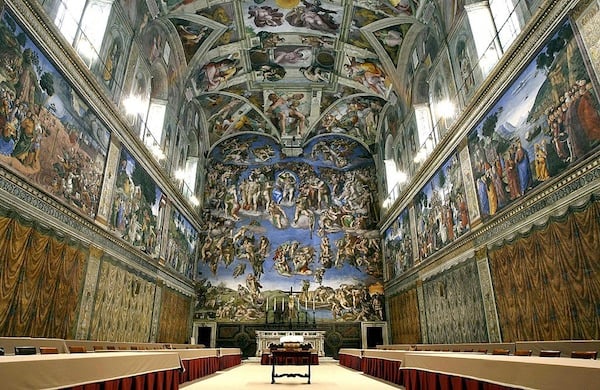Art World
This Day in History: The Sistine Chapel’s Iconic Ceiling Was Unveiled to the Public
It took Michelangelo five years to paint the 343 figures on the ceiling.

It took Michelangelo five years to paint the 343 figures on the ceiling.

Caroline Elbaor

Each year, over five million people head to Vatican City to visit the Sistine Chapel. Most are just trying to catch a glimpse of Michelangelo’s iconic ceiling frescoes.
Commissioned in 1508 by Pope Julius II, the ceiling took five years for the young Renaissance artist to complete, ultimately making its public debut on the Feast of All Saints: November 1, 1512.
Since its unveiling 504 years ago, Michelangelo’s work has been the subject of two controversial restorations, and its images have been emblazoned onto countless souvenirs and tourist swag.

The interior of the Sistine Chapel. Photo: PIERPAOLO CITO/AFP/Getty Images.
The Cappella Sistina, originally known as the Cappella Maggiore, was renamed for Pope Sixtus IV during the late 15th century, after he oversaw a complete revamping of the chapel’s interior.
Sixtus’s vision to recreate the space was then carried on by his nephew, Pope Julius II, who recruited Michelangelo to repaint the ceiling. The main panels depict biblical scenes, such as the Creation of Adam and Eve, and Noah’s Ark. There’s also key moments from the Old Testament tucked into the corners, such as David and Goliath, and Judith and Holofernes.
Despite ensuring his fame for centuries to come, Michelangelo was initially reluctant to take on the job, since he was known as a sculptor. “Every gesture I make is blind and aimless,” he lamented in a poem written in 1509, concluding, “I am not in the right place—I am not a painter.”
After five years, Michelangelo’s groundbreaking work did not go unnoticed; audience reception was overwhelmingly positive.
“The whole world came running when the vault was revealed,” the Renaissance historian Vasari wrote of the ceiling being shown to the public in 1512. “And the sight of it was enough to reduce them to stunned silence.”